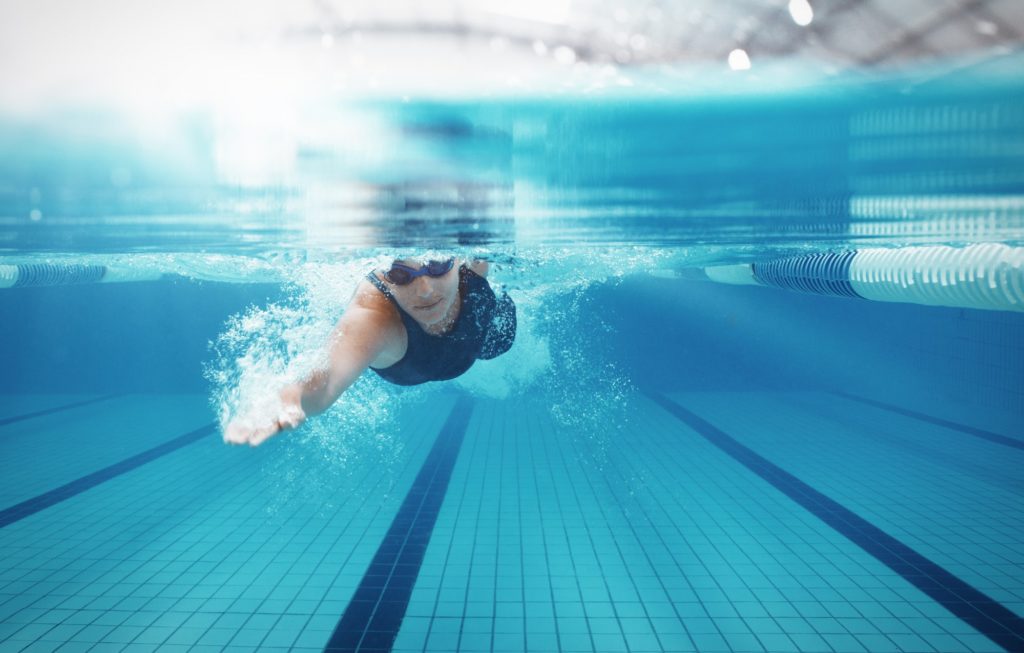Swimming for Back Pain: What You Need to Know

Swimming is often the recommendation for different kinds of chronic pain, but what about the back? It’s estimated that 80 percent of adults experience back pain at some point in their lives. Many of them will have the pain on and off for years. The treatment plan to manage persistent symptoms usually includes exercise to strengthen the core muscles and take the stress off the spine.
Since exercise is a practical choice to keep the pain away, what about swimming for back health? Consider some facts you need to know this summer about swimming and back pain.
Swimming for Back Pain Therapy
Swimming is a fun way to spend the hot summer in Milwaukee, Wisconsin but when you do it to relieve chronic pain, it’s called water therapy. It’s one of the best options around to get strong without putting undue stress on the joints. Water is buoyant, so it creates resistance when you move in it but without the jarring that comes from other forms of exercise.
Swimming is also one of the better choices for core strength, which is where back pain sufferers find the most benefit. The core and the back have a partnership when it comes to supporting the body frame. When one grows stronger, it naturally builds up the other. You use your core muscles to stabilize your body in the water and keep from rolling over as you swim. Strengthening that core means building up the back, too.
The Downside to Swimming for Pain Therapy
It’s not all good news when it comes to water therapy and back pain. You’ll need to be smart about it to ensure you don’t cause further injury. For example, don’t get into a pool with cold water. That temperature shock causes the muscles to freeze and increases the pain. Water that is too hot can lead to other medical problems like dehydration, so the ideal pool temperature is lukewarm if you have back pain.
Pick your stroke wisely, as well. Stick to the breast and backstroke to allow those muscles to grow stronger without damaging them further. Avoid the butterfly stroke completely. It puts too much stress on the back muscles. When doing the free stroke, practice rolled head breathing and avoid lifting up out of the water to catch your breath.
Start slow and build when creating your water therapy strategy. Maybe begin swimming twice a week and increase your workouts as you grow stronger. Keep each session short, at first, too, and make them longer over time.
Finally, if you can’t swim, don’t try it without help and wear a floatation device in the water. Water therapy is about skill as much as stamina. Learn to do the strokes right and avoid situations that make you feel panicked. Thrashing around in the water will cause further back injury.
What if Swimming Makes Your Back Hurt?
If you are leaving the water feeling pain in your back, then reconsider your workout routine. The pain probably comes from hyperextending your back muscles, spine or neck. Start by evaluating your stroke technique and head movement while in the water. Jerky, repetitive motion causes strain, so keep your movements fluid and easy.
Focus on keeping your body level in the pool, too, whether you are vertical or horizontal in the water. Don’t play around with trick moves like somersaults and handstands. You should either be standing or floating with your spine in alignment at all times.
Try different tools and techniques, too, like goggles or a body board to see if they help you manage the water without too many jerking movements or bends. If you continue to struggle, ask a coach or a spine surgeon for advice on making the most out of your swim time while improving your back health. If your back pain persists, consider contacting Dr. Prpa for a consultation to help get you back on track.
Experiencing Back Pain? Also Read:

